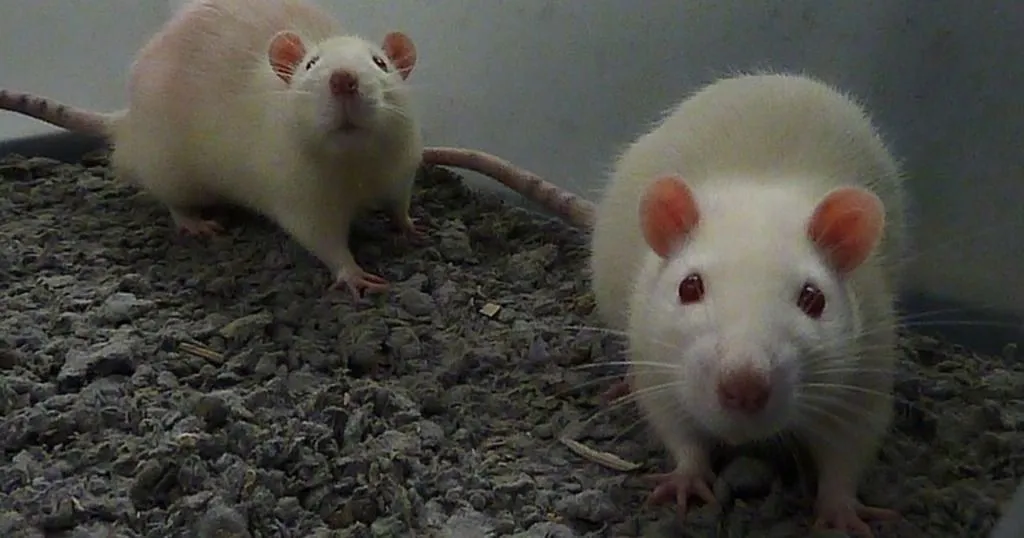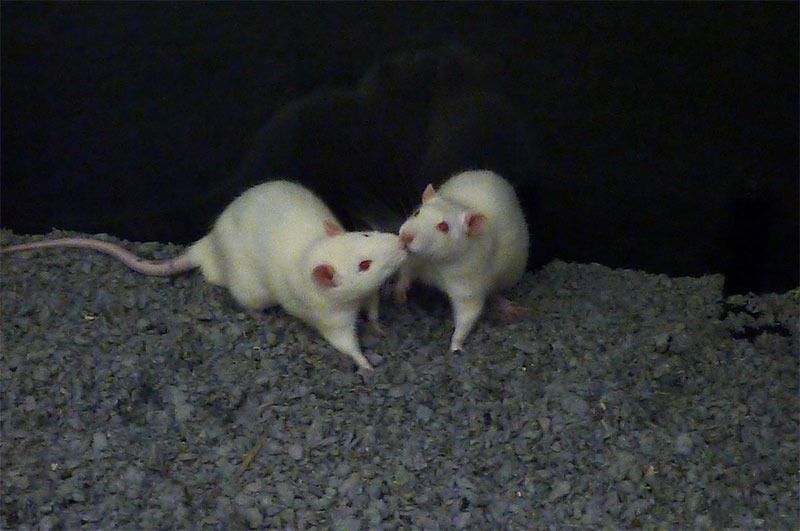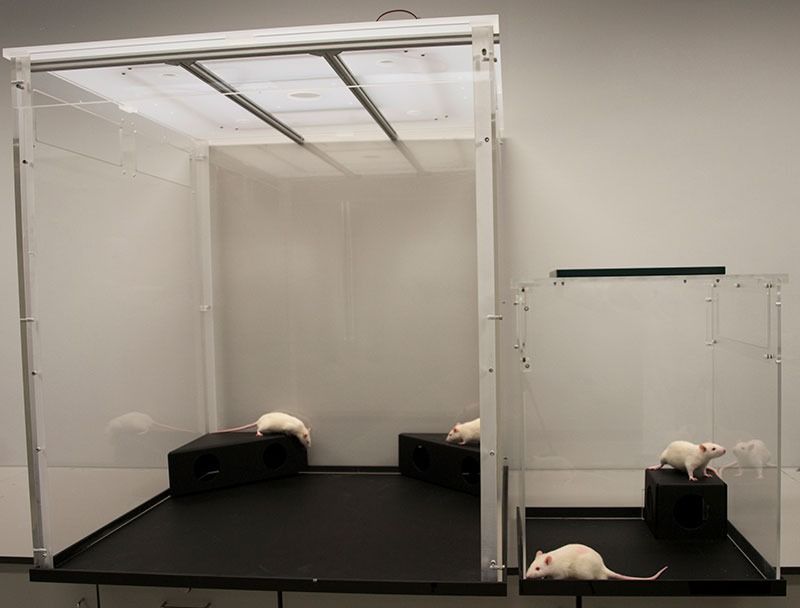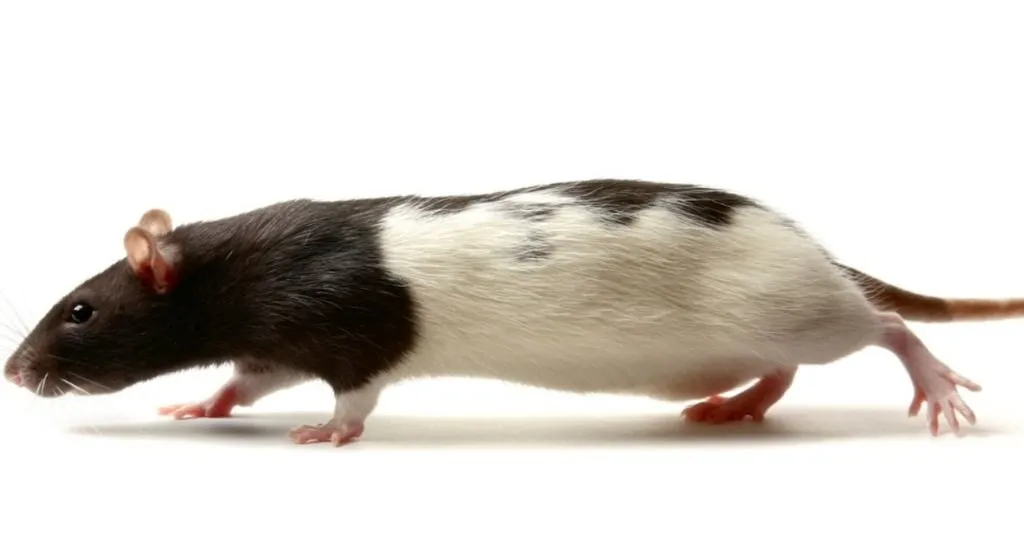Towards automated homecage monitoring of group housed rats
Rodent social behavior is important in research on neuropsychiatric disorders, but major limitations hamper progress.
Posted by
Published on
Fri 08 Jun. 2018
Topics
| EthoVision XT | Home Cage | PhenoTyper | Video Tracking |

This is a guest blog post by Suzanne Peters, PhD. Her thesis is named "The importance of rat social behavior for translational research. An ethological approach", which she defended on April 4th this year.
Rodent social behavior is an increasingly important readout parameter in animal research in light of neuropsychiatric disorders, such as schizophrenia and autism. In translational research, animal models are used to understand the mechanism by which disease symptoms manifest.
The issue of limited translational value
Ultimately, translational research must result in possible treatments. However, there are some major limitations that hamper progress[1]. For example, the limited translational value of animal models[2, 3], as becomes apparent by the lack of reproducibility of research results[4] and an overestimation of treatment effects[5].
Improve housing conditions
Several key elements are limiting translational value. First, inadequate housing and developmental conditions. It is important to provide sufficient social experiences to ensure a healthy animal, free from abnormal behavior. As is also imbedded in the European guidelines for the accommodation and care of laboratory animals (European Directive 2010/63/EU and the Commission Recommendation 2007/526/EC). Which indicate that: ‘Animals should be socially housed when and whenever possible and provided with an adequately complex environment within the animal enclosure to enable them to carry out a range of normal behavior’.
Occurrence of natural behavior
Secondly, there is a reduction in natural variation of behavior, through the process of inbreeding and by selection of relatively tame, easy to handle, animals.

Behavioral analysis
Thirdly, limited and too simplistic analysis of animal behavior. The performed behavioral tests tend to be too simplistic and too short (to capture the full repertoire of behaviors demonstrated by the animal), while the analysis of the behavioral readouts is too limited.
Even if an animal demonstrates its full behavioral repertoire, most of the currently used analysis methods are not able to qualify and/or quantify it completely. Animal behavior is thus, mistakenly reduced to a few single behavioral parameters, while covering the full complexity of all behavioral elements displayed by the animal should be the aim. In particular, simplistic behavioral analysis is problematic when the outcomes of experiments are used to interpret the functional meaning of observed behavioral differences.
Improving animal behavioral experiments
In light of these issues I have performed several experiments to illustrate that a different approach can yield more appropriate measures of behavior. Hereby, the aim is contribute to an improvement in animal behavioral experiments in order to increase the translational value of current animal models, with a special focus on social behavior of rodents. Two main characteristics of my approach are: 1) ethology and 2) automation.
Ethology in a rodent lab
Ethology is a discipline in which natural behavior of animals is studied in the context of proximate and ultimate causation. The functional meaning of behavior depends on these two distinct causes. Thus, also the biological relevance of observed behavioral changes is taken in account.
Adopting an experimental approach that allows, as much as possible, the occurrence of ethological needs, i.e. self-rewarding behaviors of laboratory animals is certainly a challenge. Fortunately, this has been recognized and resulted in the development of systems that monitor socially interacting animals, e.g.[6, 7] for mice.
Socially housed rats
For socially housed rats there is currently limited systems available[8], therefore we wanted to develop a system that can monitor socially housed rats. Such systems offer considerable advantages above setups that rely on manual observations of social interaction behavior, because they permit group-housed monitoring of animals in relatively large arenas containing for example shelters, tubes and bedding materials. The test setup should be relatively large, because the expression of social behavior requires space[9].
Automation of social behavior observation
The automated analysis of behavior offers great advantages. It allows the measurement of complex behaviors, that usually escape the human eye. It is objective and less prone to errors, plus it can record behavioral changes faster than a human observer[9-11].
PhenoTyper development
In the past, our lab has played an important role in the establishment and development of the PhenoTyper and its tracking software EthoVision, both available via Noldus. The tracking software uses top view video images in order to recognize the animals in the cages. This system was originally developed for 24/7 monitoring of individual mice and rats in an environment that allows normal rodent behavior, e.g. exploration, sleeping, nesting and feeding[12].

PhenoTyper 9000
We developed, together with our partners, an enlarged version of the PhenoTyper (90 x 90 cm, called PhenoTyper 9000) that allows social housing of rats. Additionally, this PhenoTyper is equipped with ultrasonic microphones (Metris, the Netherlands) to customize tracking software and ultrasound recording software (SonoTrack) to automate behavioral analysis including ultrasonic vocalizations of socially interacting rats.
I have utilized the PhenoTyper-9000 as a test environment for behavioral analysis of pairs of rats. During the developmental phase of the large PhenoTyper, pilot studies confirmed the feasibility of the system to study rat social behavior.
In the following blog, several examples of experimental behavioral analysis of socially interacting rats will be featured.
References
- Belzung, C. (2014). Innovative drugs to treat depression: Did animal models fail to be predictive or did clinical trials fail to detect effects. Neuropsychopharmacology, 39, 1041-1051.
- Barrett, J.E. (2015). The pain of pain: Challenges of animal behavior models. European Journal of Pharmacology, 753, 183-190.
- Braff, L.; Braff, D.L. (2013). The neuropsychiatric translational revolution still very early and still very challenging. JAMA Psychiatry, 70, 777-779.
- Fonio, E.; Golani, I.; Benjamini, Y. (2012). Measuring behavior of animal models: faults and remedies. Nat Meth, 9, 1167-1170.
- Reichlin TS, Vogt L, Würbel H. The researchers' view of scientific rigor-survey on the conduct and reporting of in vivo research. PLoS ONE, 2016;11 doi: 10.1371/journal.pone.0165999.
- De Chaumont, F.; Coura, R.D.; Serreau, P.; Cressant, A.; Chabout, J.; Granon, S.; Olivo-Marin, J. (2012). Computerized video analysis of social interactions in mice. Nature Methods, 9, 410-417.
- Weissbrod, A.; Shapiro, A.; Vasserman, G.; Edry, L.; Dayan, M,; Yitzhaky, A.; Hertzberg, L.; Feinerman, O.; Kimchi, T. (2013). Automated long-term tracking and social behavioural phenotyping of animal colonies within a semi-natural environment. Nature Communications, 4.
- Castelhano-Carlos, M.J.; Baumans, V.; Sousa, N. (2017). PhenoWorld: Addressing animal welfare in a new paradigm to house and assess rat behaviour. Lab Anim, 51, 36-43.
- Spruijt, B.M.; Peters, S.M.; de Heer, R.C.; Pothuizen, H.H.J.; van der Harst, J.E. (2014). Reproducibility and relevance of future behavioral sciences should benefit from a cross fertilization of past recommendations and today's technology: “Back to the future”. J Neurosci Methods, 234, 2-12.
- Schaefer, A.T.; Claridge-Chang, A. (2012). The surveillance state of behavioral automation. Curr Opin Neurobiol, 22, 170-176.
- Robie, A.A.; Seagraves, K.M.; Egnor, S.E.R.; Branson, K. (2017). Machine vision methods for analyzing social interactions. J Exp Biol, 220, 25-34.
- Spruijt, B.M.; DeVisser, L. (2006). Advanced behavioural screening: automated home cage ethology. Drug Discovery Today: Technologies, 3, 231-237.
Related Posts

(Un)social rats: the role of dopamine and the amygdala in social adversity

Horses: behavioral research, physiology and biomechanics
